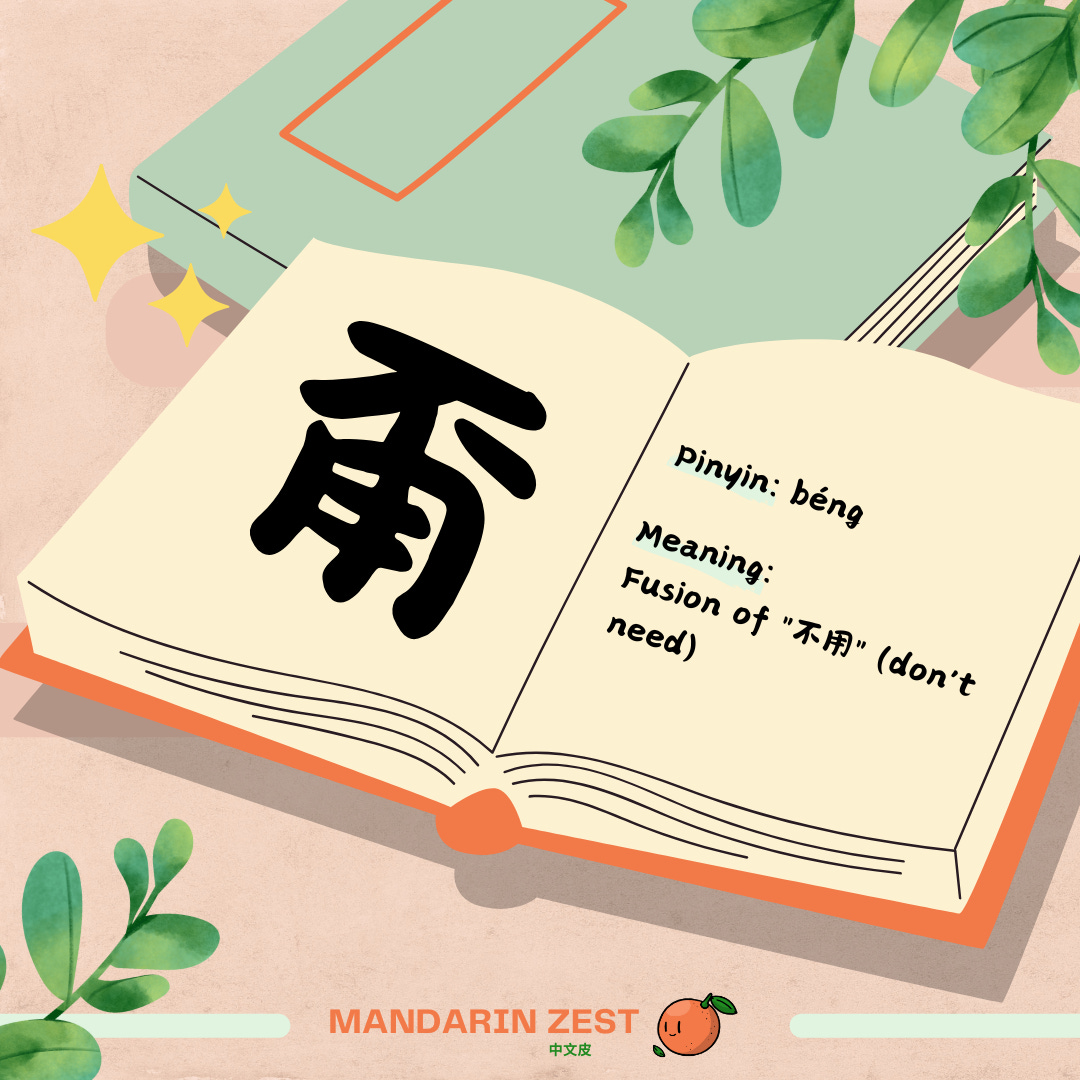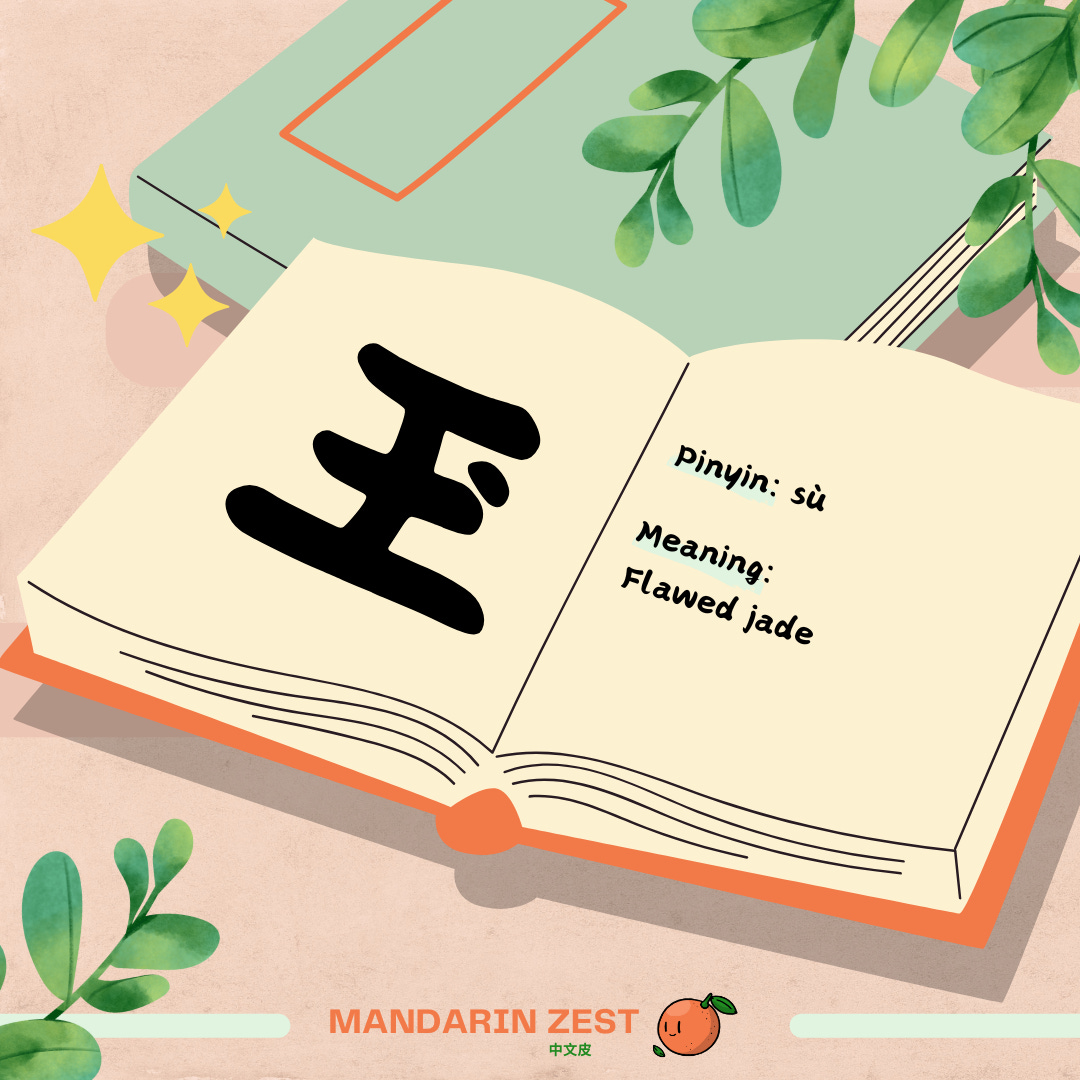9 of the Most Interesting Chinese Characters
You certainly won’t find those in your textbooks 🤯
Chinese characters are so numerous that it would be nearly impossible to see, let alone learn, them all in a lifetime. According to Taiwan's Dictionary of Variant Chinese Characters (《異體字字典》Yìtǐzì Zìdiǎn), there are over 106,303 recorded characters!
Most of these are obscure, hidden in classical literature and ancient scrolls. But here, we’ve picked out seven lesser-known characters with fascinating backgrounds that just might pop up in your Chinese learning journey!
龘 (dá) — “Dragons Flying in the Sky”
龘 (dá), meaning “dragons flying in the sky,” is renowned for being the character with the most strokes in standard Taiwanese dictionaries, with a staggering 48! Known as a “three-fold character” (三叠字), it repeats the dragon radical 龍 (lóng) three times. In ancient China, the sight of flying dragons symbolized monumental changes, like rain after a drought or the fall of a dynasty. Encountering this intricate character is like touching a piece of ancient mythology.
囍 (xǐ) — “Double Happiness”
A cherished symbol of marriage, 囍 (xǐ), or Double Happiness, celebrates joy and unity. Formed by doubling the 喜 (xǐ) character meaning “joy,” it embodies the happiness shared between two people. Often written in vibrant red,囍 is traditionally displayed at weddings to bring prosperity and fortune to newlyweds. This iconic emblem of love and harmony continues to inspire joy and goodwill wherever it’s displayed.
亖 (sì) — “Number Four”
Everyone learning Chinese quickly recognizes 一, 二, and 三, representing the numbers one to three. It feels natural to expect that sequence to continue, but the character for four is written as 四. Historically, though, there was 亖 (sì), which follows the same simple pattern and once represented the number four! While it’s no longer in use, this unique numeral occasionally pops up in calligraphy, adding a delightful twist to number learning.
囧 (jiǒng) — “Awkward or Embarrassed”
Originally meaning “patterned window,” 囧 (jiǒng) has been given a humorous new life online, becoming a popular symbol for awkward or embarrassed expressions. With its “face-like” appearance, 囧 perfectly captures those “one of those days” moments, making it a go-to for expressing frustration, gloom, or just plain awkwardness.
甭 (bèng) — “No Need / Don’t”
Did you know? The character 甭 (bèng) combines the meaning of “不用” (bùyòng - “don’t need”) and is common in northern Chinese dialects to mean “don’t” or “no need.” You’ll find it in everyday phrases like 甭管 (bèng guǎn - “don’t worry about it”) and 甭客气 (bèng kèqi - “no need to be polite”). This practical character adds a regional twist to daily conversation.
玊 (sù) — “Flawed Jade”
Look again—玊 (sù) isn’t quite the same as 玉 (yù), which means “jade.” In 玊, the dot is above the second horizontal stroke, giving it the meaning “flawed jade.” While not common, it’s a reminder of the incredible nuance in written Chinese, where a single stroke can make all the difference.
巭 (gū) — “a person with kung fu skills”
"巭" is a unique Chinese character, combining 功 (gōng) and 夫 (fū) from the word "kung fu," symbolizing martial arts, dedication, and hard work. After Kung Fu Panda, it became a playful shorthand for “a person with kung fu skills.”
冇 (mǎo) — “not have”
While not commonly used in standard Mandarin (where it’s pronounced mǎo), it plays an important role in Cantonese and has a fascinating design. The character 有 is made up of 又 (hand) and ⺼ (meat), symbolizing possession—a hand holding a piece of meat. In 冇, the ⺼ loses its stripes, turning it into an empty hand and perfectly capturing the idea of "not having."
挊 (nòng) — “…”
Chinese netizens love reviving old, unused characters and giving them modern twists. 挊 (nòng), originally an unused variant of 弄 (nòng, meaning “to do; manage; handle”), combines the hand radical 扌 with the characters 上 (up) and 下 (down). Can you guess what it might refer to? We’ll leave that to your imagination—but here’s a hint: 👋🍆.
Exploring these unique characters reveals not just linguistic complexity but also layers of culture, history, and even humor within the Chinese language. Keep an eye out for intriguing symbols like these on your Chinese learning journey—they may just add an extra bit of magic along the way!
Antoine & Dorota














